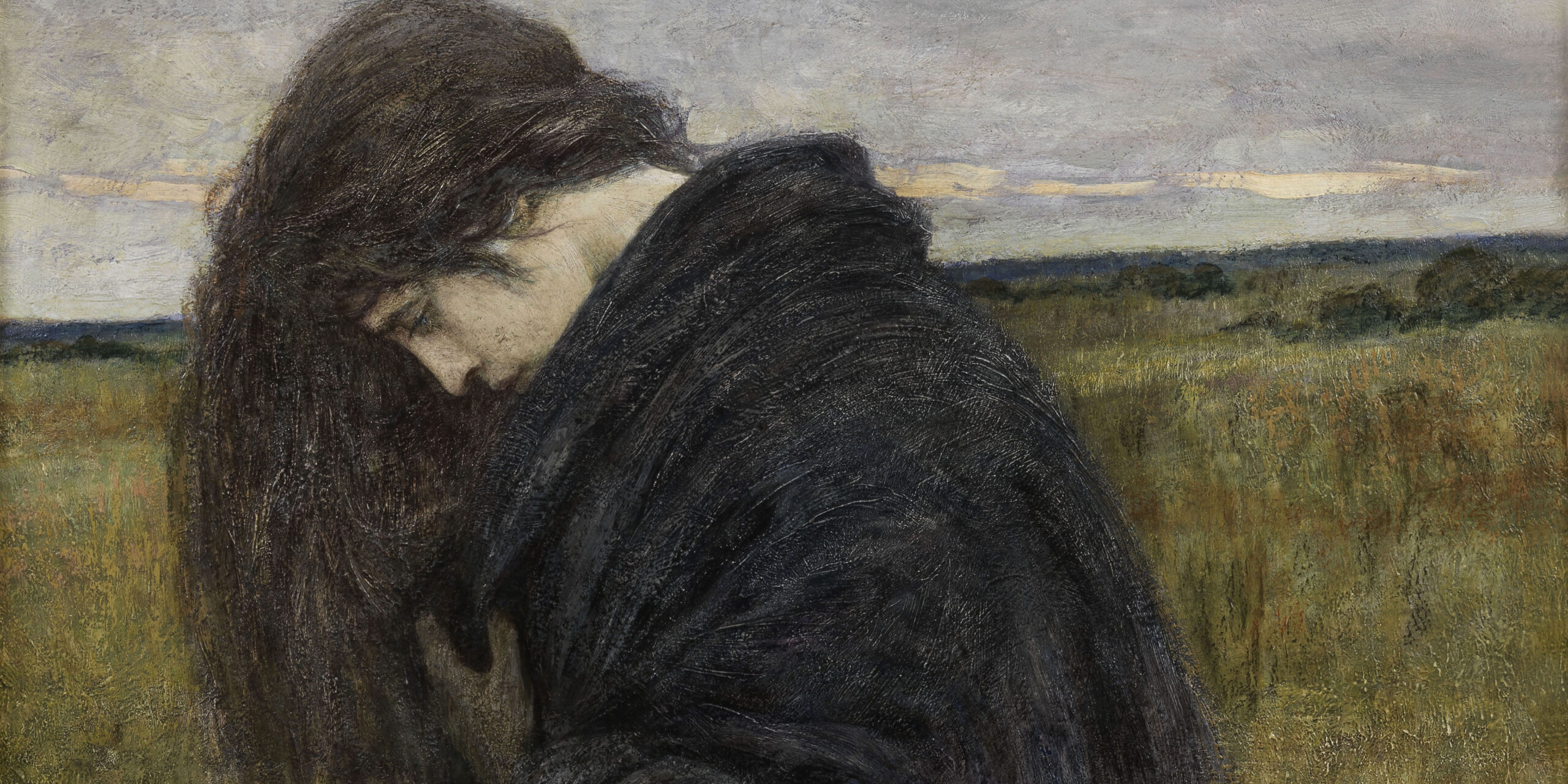| NOT AVAILABLE

Mesola, Ferrara 1854-Venice 1936
Study of Head: Elegiac Motif
1895
Oil on panel 58.5 x 96
Signed lower right: “C. Laurenti”
Provenance: Rome, private collection
Bibliography: Mario Morasso, “Artisti contemporanei: Cesare Laurenti”, in Emporium, January 1902, vol. XV, nr. 85, p. 13 (ill.), 14; Cristina Beltrami, “Cesare Laurenti: dalla pittura di genere all’idea”, in Cesare Laurenti (1854-1936), edited by Cristina Beltrami, Quinto di Treviso 2010, p. 14 (vintage photo ill.).
After wandering among the various different artistic schools of Ferrara, Florence and Naples, Cesare Laurenti settled in the Venice of Favretto, Ciardi and Nono, where he initially established himself as a genre painter of popular subjects. After this fortunate season of anecdotal pictorial realism, Laurenti experimented with a more difficult thematic range, still realistic in structure but of subject matter that was allegorical and moral with academic intentions. This he did from the second half of the eighteen eighties (Frons Animi Interpretes, Le Parche, La Capinera, Epilogo, Parabola, from the years 1887 and 1894), until he reached an idealist painting, populated by symbolic figures that were often female, in dialogue with the European examples of the time exhibited at the Venice Biennales, where Laurenti always participated as a protagonist, and that expressed feelings, existential conditions and literary allegorical visions tied to symbolism (Fioritura nuova, Armonie della sera, Metamorfosi, Foglie cadenti, Via aspra). Over the following years, before he withdrew in order to dedicate himself above all to collecting and antiques, Laurenti interpreted the role of multi-faceted artist of neo-Renaissance inspiration, employing various mediums, from ceramics, to sculpture, to decorative painting and architecture, responsible for the notable project to design the new Pescheria di Rialto in Venice.
Among the emblematic half figures of symbolic and sentimental character, the newfound Study of a Head: Elegiac Motif stands out, until now known from period photographs and in a second version in pastel dedicated to the critic Ugo Ojetti (private collection). According to its own collectors’ tradition, the painting was exhibited ex catalogue at the Venice Biennale of 1895 and was then published by Mario Morasso in 1902 in a monograph essay in Emporium. The work fully interprets the symbolist poetic of the author at that time, through an iconic figurative and expressive synthesis. The female profile, suggestive of the pre-Raphaelites, stands out against a bare landscape at dusk, bent in on herself. Thus the figure expresses existential discomfort and desolation; ultimately the condition of modern man. Morasso described it thus: “Elegiac Motif, in which mournfulness becomes desperation, in which desperation has devastated and hunched the human being; a person defeated and bereaved bends towards the ground with thick hair tilting heavily, like a dense sheaf of tears, like a sheaf of misfortune.” The experimental pictorial technique is conveyed through the thick preparation by means of dense and filamented brush strokes, that have nonetheless moved on from the recent tradition of “divided colour,” from Segantini to Previati.
The Carlo Virgilio & C. Gallery searches for works by Laurenti Cesare (1854-1936)
To buy or sell works by Laurenti Cesare (1854-1936) or to request free estimates and evaluations
mail info@carlovirgilio.co.uk
whatsapp +39 3382427650
